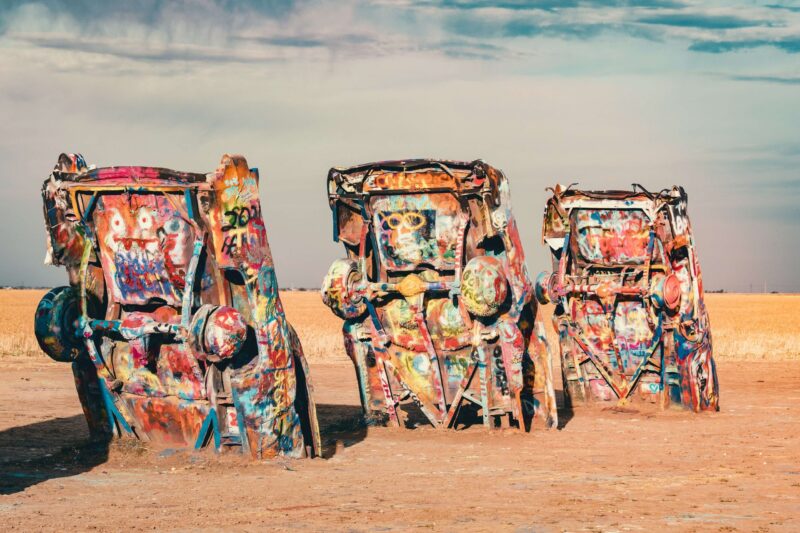People trust the internet for everything—especially when planning travel. Blogs, review sites, forums, and social media posts shape opinions and steer decisions. But too much content means too much noise. Misinformation slips in easily. Some of it is accidental. Some is intentional. Either way, it spreads fast.
Not every guide is honest. Not every tip is tested. And not every writer has been where they claim. The pressure to publish content fast often trumps accuracy. Algorithms reward bold headlines, not verified facts. In travel, that can mean wasted money, missed opportunities, and ruined expectations.
If you want to avoid common traps, it starts with asking better questions—and knowing where deception hides.
Key Highlights
- Travel misinformation spreads faster due to emotion-driven content and unverified sources.
- Personal blogs and influencer posts often carry biased or exaggerated views.
- Photo manipulation and outdated information fuel unrealistic expectations.
- Artificial intelligence tools can now detect unreliable or bot-generated content.
- False “hidden gems” or fake reviews can mislead even savvy travelers.
- Spotting trusted sources requires specific checks and critical reading habits.
Why Travel Misinformation Works So Well

The travel niche thrives on emotion. Readers search for beauty, inspiration, escape. Content that delivers dreamy visuals or unbelievable secrets wins clicks. The problem starts when creators stretch reality to fit that demand.
- Misleading headlines attract attention, but don’t always match the facts.
- Blogs repeat each other’s claims without firsthand verification.
- Travel “hacks” are recycled without checking if rules have changed.
Many creators have never visited the places they describe. Others rely on AI-powered tools to generate travel content in bulk. That’s where technology complicates truth.
To stay ahead, content platforms are developing systems to flag machine-written material. One such system, detector de ia, uses advanced text analysis to uncover whether an article was written by a human or by automated tools. It helps readers and publishers filter content for authenticity and reliability.
The Role of Photos and Visual Deception
A photo can speak louder than any sentence—but it can also lie.
Many travel bloggers edit photos beyond recognition. Filters distort skies, water, and crowds. Overly staged photos also hide real conditions. What seems like a quiet beach may actually sit beside a busy port.
Stock photography adds another layer of confusion. Some “local” images don’t even match the country mentioned. The result? Travelers form false impressions and arrive disappointed.
To avoid visual misinformation:
- Use tools like reverse image search to check photo origins.
- Compare multiple sources before trusting one blog’s photos.
- Avoid guides that show only picture-perfect scenery without logistical info.
The Myth of the “Hidden Gem”

Search for “hidden gem” on any travel blog and you’ll find thousands of results. The phrase once meant something special and undiscovered. Now it often signals clickbait or exaggeration.
In reality, most hidden gems are no longer hidden. They’re popular spots with marketing twists. Or worse, they’re completely fabricated to attract traffic.
Real hidden gems require:
- Local input (guides, forums, native-language blogs)
- Clear directions or transportation details
- Up-to-date access info (entry fees, opening hours)
If a post claims a perfect location but lacks real logistics, be skeptical.
How Artificial Intelligence Skews Travel Content
Writers and marketers often use artificial intelligence to save time. Travel blogs powered by language models can generate dozens of posts in a day. The problem? Those tools don’t know if a beach has seaweed problems or if a hotel’s pool is under renovation. They use generalized info pulled from old sources.
AI-generated content can:
- Include factual errors
- Repeat outdated information
- Miss context only locals or recent visitors would know
This doesn’t mean every post written with assistance is wrong. But it highlights the importance of verification. Reliable travel info must come from recent experience or credible sources—not just word prediction engines.
Spotting Red Flags in Travel Guides
Knowing how to identify misinformation is the first defense. Look for signs that something may be off.
Common warning signs:
- No author bio or travel credentials
- Lack of timestamps or outdated content
- Only positive reviews with no cons
- “Too good to be true” language without proof
- Vague directions or generic recommendations
Also, pay attention to how a blog responds to questions or criticism. Genuine authors engage. Misinformation often avoids scrutiny.
Fake Reviews and Influencer Bias

Reviews carry weight. They influence hotels, restaurants, tours, and entire itineraries. But many reviews online are fake—written by bots, purchased, or exchanged.
Influencers may also receive free perks in exchange for glowing write-ups. That creates a conflict of interest. Readers can’t always know if a beachside resort is truly worth it or just part of a marketing deal.
What helps spot real reviews:
- Verified purchase or stay history
- Balanced tone with pros and cons
- Mentions of small details or service quirks
- Honest answers to user questions in comment sections
Check multiple review platforms. If a hotel has 5 stars everywhere but awful photos on Google Maps, dig deeper.
What Platforms Do to Fight Misinformation

Some major travel websites use machine learning models to monitor suspicious activity. Others rely on human moderation to assess guide accuracy. Still, not all do enough.
Readers must act as their own filters. That means double-checking facts across several sites, using map tools, and relying on multiple languages when possible. Forums like Reddit or niche Facebook groups often provide firsthand reports.
Artificial intelligence tools now allow users to evaluate if an article shows patterns of non-human authorship. These tools enhance credibility filtering and should be part of any research strategy.
Practical Steps to Avoid Misinformation Before a Trip
To protect your time, money, and mood, follow specific checks before trusting any travel advice.
Do this before booking or planning:
- Search for local blogs in native language (then translate)
- Cross-check advice on forums like TripAdvisor, Reddit, or Facebook groups
- Use Google Earth to compare photo claims with real landscapes
- Search location tags on Instagram for unedited visitor photos
- Check for recent visitor comments under articles or videos
Don’t rely on one blog or one voice. Building a complete view requires layering perspectives from those who were actually there.
Final Thoughts: Trust Comes from Repetition and Proof
Travel is deeply personal. But research should be practical, not romanticized. Don’t fall for the story without checking the facts. Every photo, every blog, every “secret” may carry more fiction than truth.
The goal isn’t to doubt everything—it’s to learn how to tell what deserves your trust. Ask better questions. Compare sources. Use the tools built to help detect errors or bot-written content. Stay sharp, and your travel experience will be richer, smoother, and more real.

